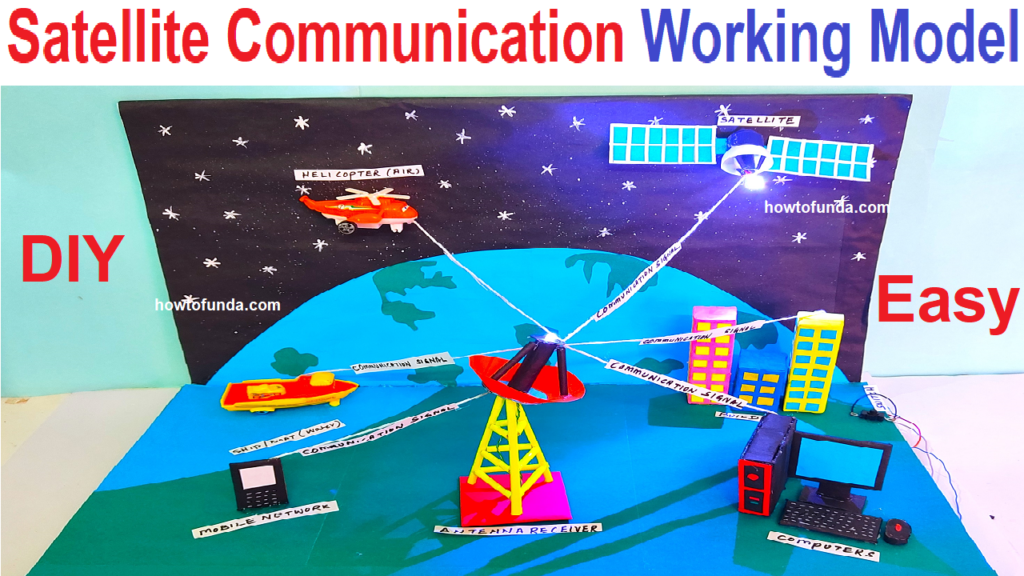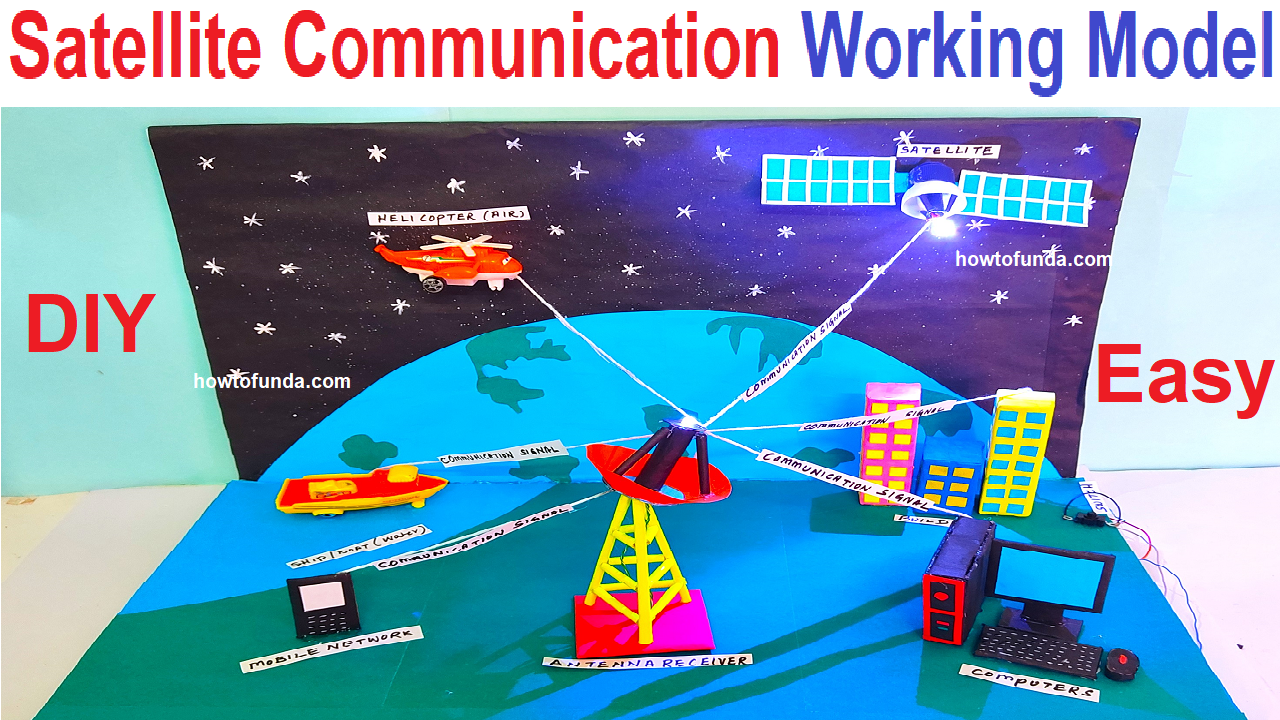A satellite communication model refers to the system or systems used to transmit and receive communications signals via satellites in Earth’s orbit.
This can include the physical satellites themselves, the ground stations used to communicate with the satellites, and the equipment and infrastructure used by users to access the satellite signals.
The most common type of satellite communication is geostationary satellite, which are placed at an altitude of about 36,000 km above the Earth’s surface, and are used for long-distance telecommunications, television broadcasting, and weather forecasting.

Step by step video on making of satellite communication model
Q: What is satellite communication?
A: Satellite communication is a method of transmitting and receiving data through the use of orbiting satellites.
These satellites act as relays, sending and receiving signals between ground stations and other satellites.
Q: How does the model demonstrate the process of satellite communication?
A: The model may use a physical representation of a satellite and a ground station, and demonstrate how signals are sent and received through the use of antennas and transceivers.
The model may also show how the satellite is able to relay signals to other satellites or ground stations.
Q: What are the advantages of using satellite communication?
A: Advantages of using satellite communication include that it can provide coverage to remote or inaccessible areas,
it can be used for long-distance communication, and it can be used for multiple types of data transmission such as voice, data, and video.
Q: What are the disadvantages of using satellite communication?
A: Disadvantages of using satellite communication include that it can be expensive to launch and maintain satellites.
it can be affected by weather conditions, and it can experience latency or delay in data transmission.

